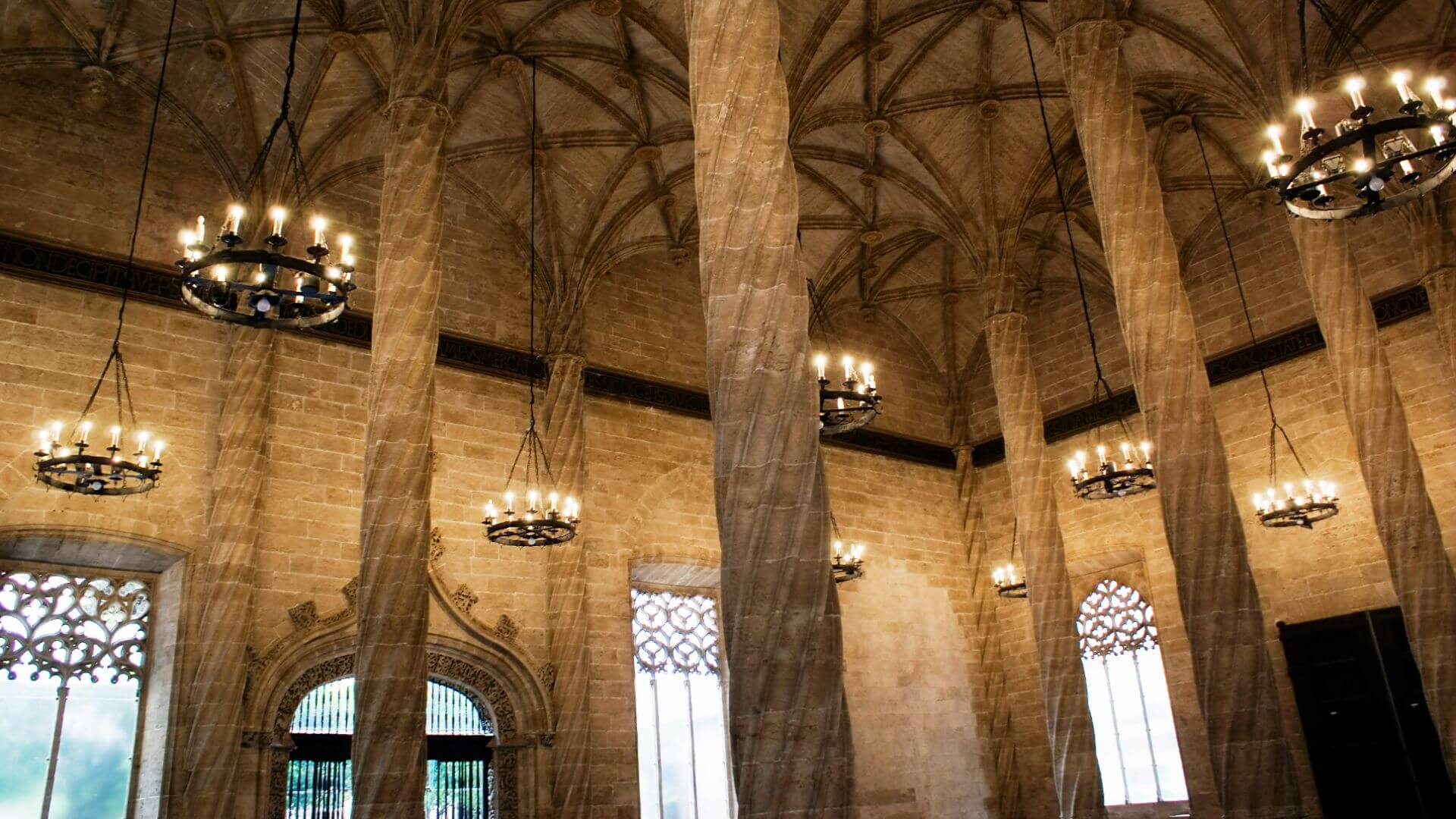Step into the world of medieval commerce and Gothic grandeur at La Lonja de la Seda, a masterpiece of historical architecture in Valencia, Spain. This former Silk Exchange, a UNESCO World Heritage site, stands as a testament to the city’s rich mercantile past and architectural brilliance. Built in the 15th century, La Lonja de la Seda is renowned for its stunningly detailed Gothic design, symbolizing the economic and cultural zenith of Valencia during the Middle Ages.
As you enter this iconic building, you are greeted by the grandeur of the Contract Hall, with its soaring spiral columns and ribbed vaults, creating an atmosphere that is both majestic and awe-inspiring. The harmonious interplay of light and shadow, coupled with the intricate stonework, transports you back to an era where La Lonja was a bustling center of trade and negotiation.
In this introduction to La Lonja de la Seda, we invite you to explore the beauty and history of one of Valencia’s most significant landmarks. From the serene Patio of the Orange Trees to the elaborate façade, every element of La Lonja tells a story of the city’s prosperous past and its enduring legacy. Whether you are an enthusiast of history, architecture, or simply seeking to immerse yourself in the essence of Valencia, La Lonja de la Seda offers an unforgettable journey into the splendor of the Gothic era.
La Lonja de la Seda: A Monument to Valencia’s Golden Age
La Lonja de la Seda, situated in the heart of Valencia, stands as a magnificent example of late Gothic architecture. Built in the 15th century, this historic building was once the center of European silk trade, reflecting the economic and cultural prosperity of Valencia during that period. Its stunning façade, intricate stone carvings, and grandiose interior make it a must-visit for anyone interested in history and architecture.
Architectural Splendor of the Silk Exchange
The architectural design of La Lonja de la Seda is renowned for its elaborate detail and symbolic significance. The main hall, or Contract Hall, features soaring spiral columns, representing palm trees, and a vaulted ceiling that creates an atmosphere of grandeur and opulence. The intricate details continue in the Patio of the Orange Trees, an elegant courtyard that offers a serene escape from the bustling city streets.
La Lonja’s Role in Valencia’s History
La Lonja de la Seda was not only a commercial hub but also a symbol of Valencia’s power and wealth in the Mediterranean. Its role in the silk trade is a testament to the city’s historical importance in international commerce. Today, La Lonja stands as a monument to the city’s rich mercantile past and is an essential part of understanding Valencia’s historical development.

UNESCO World Heritage Site: A Cultural Treasure
Recognized as a UNESCO World Heritage site, La Lonja de la Seda is celebrated for its cultural and architectural significance. It is one of the finest examples of a secular Gothic building in Europe and a key landmark in Valencia, attracting visitors from around the world who come to admire its beauty and historical importance.
La Lonja de la Seda – Valencia’s Testament to History and Artistry
Visiting La Lonja de la Seda is a journey into the heart of Valencia’s golden age. The building’s architectural beauty, historical significance, and enduring legacy make it a standout landmark in the city. Whether you are captivated by its Gothic architecture, interested in its role in the silk trade, or simply looking to explore one of Valencia’s cultural treasures, La Lonja de la Seda offers a unique glimpse into the past, preserved in the midst of a modern city.
For more information on Valencia’s attractions and events, visit the official city website.
